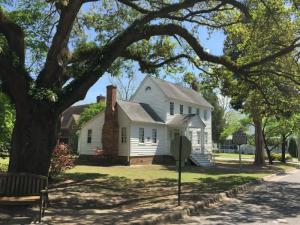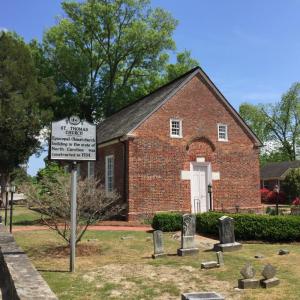In the Intracoastal Waterway, the migration is on

We hauled Nellie Lankford down the peninsula, across the Chesapeake, and into North Carolina last week to see how spring is progressing. Just below The South Starts Here sign at a fireworks and cheap smokes store at the Maryland and Virginia line, we pulled into a Food Lion for provisions.
A friendly and frumpy white-haired lady wandered across the parking lot toward us. Looking at our rig, she smiled.
“Don’t know where you’re going, but I hope you have a good time,” she said. “I used to live in Oregon, and my husband and I loved boating on the lakes there. Very pretty. It was fun. We lived in Puerto Rico for a while too.”
She was chatty. It was early. We rolled out of Lewes at 0500 to make the bay bridge tunnel by 0800 and we were on schedule. Maybe her coffee was kicking in, but we didn’t care. She was sweet.
“After my husband died I moved back here, to Birds Nest, where I grew up. Not sure why. Family maybe. I have a hard time explaining to people why I moved back to Birds Nest. Loved Oregon. I have a hard time figuring it out for myself.”
We said our goodbyes; she headed off toward the food store and we rolled back out onto Route 13.
We launched in Coinjock, on the Intracoastal Waterway, known to most boaters who travel up and down the East Coast as the ICW. On the dock at Coinjock Marina and Restaurant, we pulled behind a trawler and tied up for lunch. Norman told us the migration is on.
“They’re all coming back north now from Florida,” he said. The boating snowbirds are job security for the marina and restaurant employees.
We ate a bunch of seafood for lunch - scallops, crab cake, salmon, shrimp and a fine piece of pollack - chased with cold Chardonnay and slices of Miss Nonny’s homemade coconut cake. The cole slaw and pickled beets were also excellent. I recommend that restaurant highly. Nothing fancy. Just clean and simple with a pretty and friendly waitress.
After a calm run down the North River and a quiet evening in Broad Creek, we motored out early the next morning to cross the broad Albemarle Sound before the wind came up. Even at 0700 we weren’t early enough to beat the northeast zephyrs pushing across the sound.
Becky white-knuckled it as Nellie surfed, scudded and pitched her way over the 10-mile passage. “We need a bigger boat!”
Going up the waves on the following seas, she labored back to about eight knots. Surfing down the other side, she would speed up to 14 and enjoy the ride as I wrestled her on as straight a course as I could manage. Becky wasn’t amused. It’s generally true that the vessel can take more than the crew.
Alligator’s little reprieve
Getting inside the Alligator River didn’t give us much pause, as the wind was blowing straight up its axis and ours too. So rather than spend another few hours seeing just how nasty that building northeast wind could get, we opted instead to pull into the remote but protected Alligator River Marina.
Wanda runs a tight ship there, and we met nice people who also had ducked in. Craig and Ellen were on a 40-foot trawler heading north. They sold everything in Birmingham, Alabama last fall and left in October to make the Great Loop that includes the Mississippi River, the Florida coasts and East Coast, and on up until entering the Great Lakes and turning westward and southward to finish on the Mississippi. “We’re taking two years and looking for where we will live next,” he said.
We told them about the great restaurant along the ICW in Coinjock. (You can drive there or boat there.) Ellen said that fit her impression.
“We weren’t impressed by the seafood in Florida. Bland. But we’ve been impressed by what North Carolina does with theirs.”
The sounds and wilds of the eastern part of North Carolina aren’t that far away, but they really are a different world. We don’t have alligators in our rivers.
Vashon, who gave us a ride to Coinjock to get our truck and trailer - Becky refused to go any farther until I agreed that the next time we crossed Albemarle Sound would be on a bridge and not a boat - told us he had eaten alligator. “It’s chewy and tastes like snapping turtle,” he said.
We also don’t have signs along our roads warning us of bear crossings. And billboards calling the U.S. Fish and Wildlife Service liars about red wolves are few and far between in Sussex County.
At one marina, the dockmaster told us not to fall into the river. “We have water snakes and water moccasins here,” he said. “They’re cagey.” Cawood says a snake will eat anything he can get his hands on.
And I don’t even want to get into the sharp-tusked and 300-pound boars that Pat said roam the wildlife areas that fringe the sounds and rivers.
Becky said we will probably forgo camping there.
The weather settled down after that, stayed warm and gentle, and we made it through the Alligator-Pungo rivers canal to get into the Pamlico River system.
There’s a lot that could be said about one of the world’s largest potash plants, on the shores of the Pamlico - basically mining thousands of years of marine creature skeletons from great pits. And about the sleepy crabbing town of Belhaven - birthplace of the ICW - where we ate with Pat and Mary in an unbelievably good and unexpected restaurant called Spoon River. Our waitress Tamika looked like Oprah - only prettier - and was just as delightful. The marina operator at Dowry Creek said Spoon River is the best restaurant in eastern Carolina.
And I could talk about the village of Bath, which is to North Carolina what Lewes is to Delaware - the states’ first towns. But that’s enough. I’ll put some photos of these places with this column online if you want to take a look.
Jimmy Buffett sings lovingly: “From the bottom of my heart to the coast of Carolina ... .” I can see why. The land and water are dynamic and beautiful, and the people are just the same.
We count our blessings that we were able to sample it and report back that spring is doing just fine down that way.




























































